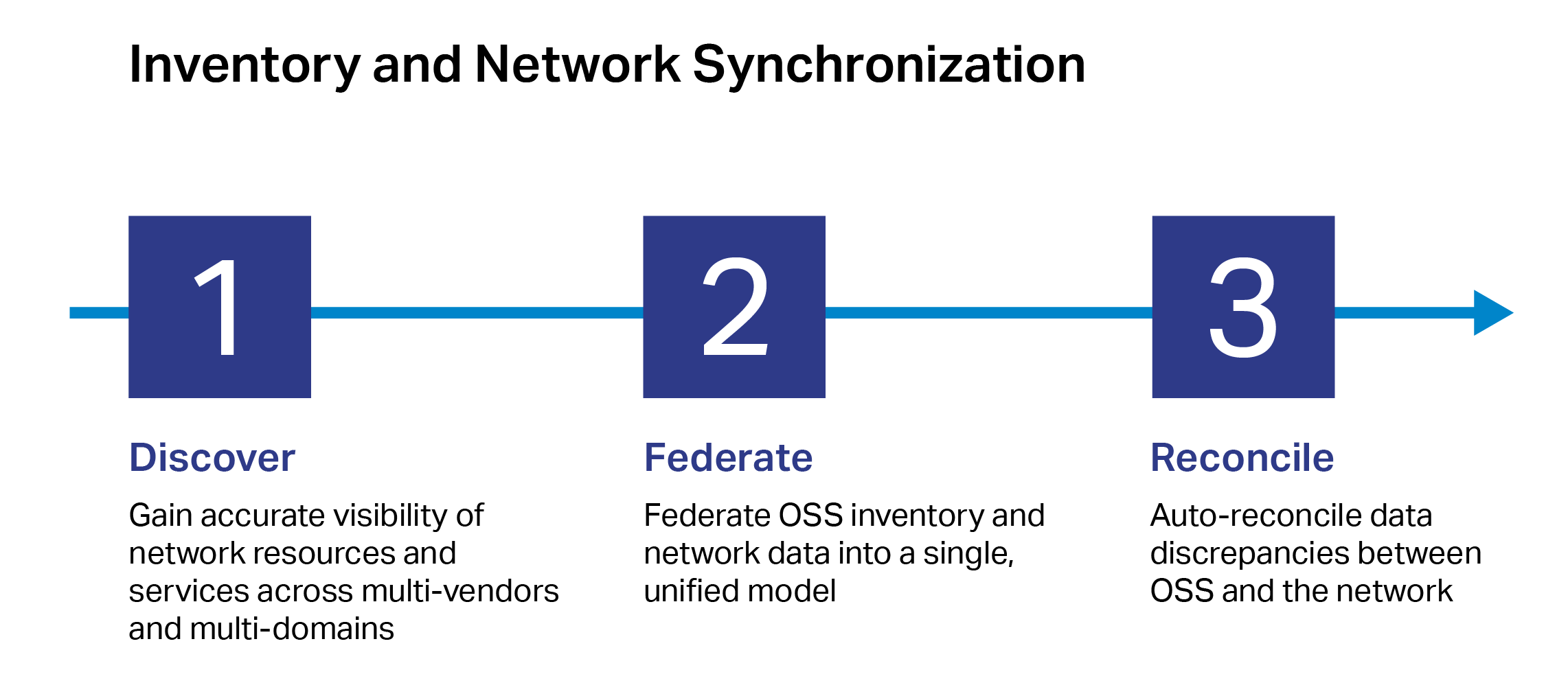A modern approach to network inventory management
Inventory management systems are a critical component of a network provider's operations and represent the key building block required for operations support system (OSS) automation and transformation. Historically, inventory data has been inaccurate, static, and spread across multiple fragmented OSS that proliferated over time as new service offerings and technologies were introduced. The migration to dynamic networks and virtualization only makes this fragmentation problem worse, slowing down your ability to effectively plan, deploy, and operate new revenue-generating services.

Blue Planet INS solution unifies OSS data with discovered network resources into a single model for use by network and IT teams
Get the full picture in three steps
The INS solution dynamically discovers physical and logical resources across multiple layers and vendors. It then reconciles the discovered data together with planned and federated inventory data into a single, unified model. Resource adapters interface directly with any data source, including existing inventory management systems, element or network management systems (EMS/NMS), and domain controllers, as well as directly with underlying network functions. Leading-edge graph database technology provides flexibility in discovering, modeling, and visualizing complex networks and allows new properties and relationships to be established dynamically.
Accurate network and services visibility for greater efficiency
Blue Planet's Inventory and Network Synchronization (INS) solution addresses these challenges by creating a "single source of truth" for your network. Built on Blue Planet's common Cloud Native Platform, it provides comprehensive, accurate visibility of physical and virtual network resources and service topology across multiple vendors and domains. This unified and accurate approach to inventory data management simplifies planning, enables the automation service activation and assurance processes, and accelerates the implementation of AI.
Business benefits
Optimizes and automates operational processes with a unified and accurate view of physical and virtual network resources and services topologies
Accelerates the adoption of AI in your operations with a “single source of truth”
Improves operational efficiency by providing network and IT teams with access to accurate data sooner
Offers a flexible reconciliation process based on business rules and parameters
A look ahead: An AI/AR approach to INS
As networks and services continue to evolve, service providers need new tools and technologies that support the evolution toward intelligent network automation and correcting data discrepancies, while maintaining established delivery processes to their customers. A new approach is to use existing smart device technology that combines AI and augmented reality (AR) with federated data to create a discrepancy detection and reconciliation solution that can be easily used in the field.
